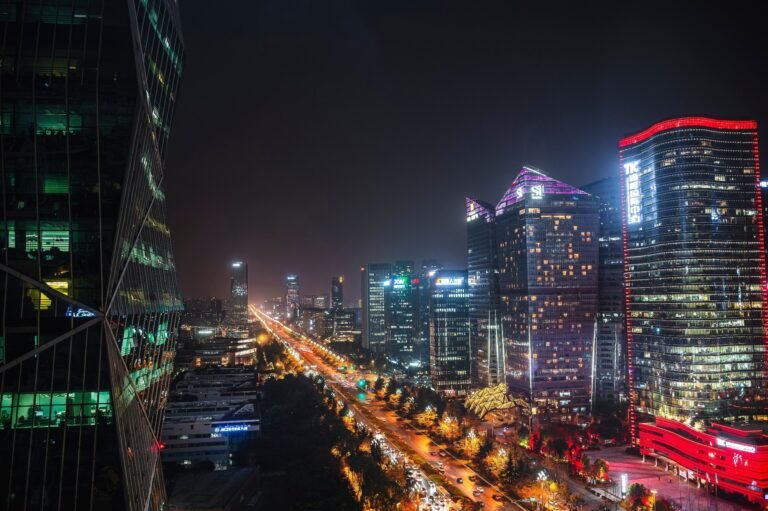In a recent study published in The Lancet Regional Health-Western Pacificresearchers compared epidemiological data from Chinese megacities to assess the effect of their different urban development trajectories over time on the health of their elderly residents.
Study: Benefit and penalty for urban health in aging populations: a comparative study in large megacities in China. Image credit: mehdi33300/Shutterstock.com
Record
Cities are critical for infrastructure, services, and economic development, and urban living is associated with improved health outcomes due to increased access to health care, education, and transportation.
However, decentralization in wealthy nations has resulted in poverty, crime and drug use in urban areas, as well as pollution, overcrowding and health inequalities.
There is a disparity in life expectancy in China, and understanding the relationship between well-being and urban development is critical to fostering healthy aging among individuals and maintaining improved life expectancy. Most research focuses on urban-rural disparities, with limited emphasis on evidence-based health disparities within cities.
About the study
In the present study, researchers used high-resolution geospatial demographic data to explore complex interactions between urban environments and urban planning with individual health outcomes in older people living in six megacities in China: Shanghai, Beijing, Guangzhou, Tianjin, Chengdu, and Chongqing. .
The researchers examined empirical data demonstrating resource and pollution disparities within and between cities. They used spatiotemporal variations in green spaces, air pollution and nighttime lighting in cities to measure environmental parameters and economic activities.
Over 20 years, researchers in China have tracked changes in air pollution [particulate matter with a diameter less than 2.5 μm (PM2.5), nitrogen dioxide (NO2), ozone (O3)]green areas [measured by the Normalized Difference Vegetation Index (NDVI)]road infrastructure (ring road areas) and night lighting.
Over 16,824 individual years, the researchers followed 4,992 older adults (mean age, 88 years). They used data from the Chinese Longitudinal Healthy Longevity Survey (CLHLS) to investigate the impact of air pollution on China’s elderly population. They collected PM2.5 data from the Atmospheric Composition Analysis Group and NO2 data from global NO2 land-use regression (LUR) models.
The researchers estimated ozone concentrations using the Community Multiscale Air Quality (CMAQ) model, population density, climate factors, and road height and length.
They used Google Earth Engine, the China Resource and Environment Science and Data Center, and Gridded Population of World Version 4 (GPWv4) population data to determine the average nighttime illumination.
Cox proportional hazard regressions calculated hazard ratios (HR) to estimate the relative risk of socioeconomic and environmental variables on survival.
The researchers evaluated 14 factors to determine longevity, including age, ethnicity, biological sex, residence, marital status, education, occupation, household income, alcohol consumption, smoking, exercise, sport and the number of points of interest (POI). , scenic spots and recreation-related areas within a 5.0 kilometer radius.
The researchers calculated the unweighted population attributable fraction (PAF) of all-cause mortality using environmental, socioeconomic, and geographic risk variables.
Results
Among the participants, 58% were female, 98% were Han Chinese, 72% did not live with their spouse, 89% engaged in manual labor, 53% had no formal education, 65% had never smoked, and 69% he had never consumed alcohol.
Survival rates were higher due to geographic proximity to attraction sites. Older adults living in POI-rich areas had a 35% to 36% reduced risk of death compared with older adults from POI-poor areas for the upper and lower quartiles, respectively.
Higher levels of air pollution, such as NO2 and PM2.5, were associated with 10% (HR, 1.1) and 21% (HR, 1.2) increased risks of death per 10 μg m.-3respectively.
Annual average PM2.5 and NO2 levels ranged from city centers to suburbs in Shanghai, Chongqing, Chengdu and Guangzhou, with Beijing most affected. Ozone levels were higher in Beijing, Shanghai and the outskirts of Chongqing but not in Tianjin.
Night-time light levels decreased from inner to outer ring road locations in all six metropolitan areas. Higher levels of nighttime light were associated with improved health outcomes in fully adjusted models.
The study found a strong association between drug-related facilities and death, with continuous measures indicating an HR of 0.98.
From 1999 to 2019, the three-year average concentration of PM2.5 in megacities increased with variation before gradually decreasing, with a slow decline followed by an increase from 2010 to 2013. The development trend exhibited an “M” shape that was more visible in Shanghai.
conclusion
The study showed that city centers often inhabited by people with a better socio-economic status provide easy access to public services and economic events, which may alleviate the negative health consequences of reduced green spaces and increased air pollution.
The findings show that polycentric urban spatial development, balanced infrastructure, natural areas and reduced air pollution can lead to health-enhancing age-friendly cities. The findings can help city planners and health authorities design more equitable, age-friendly communities.
